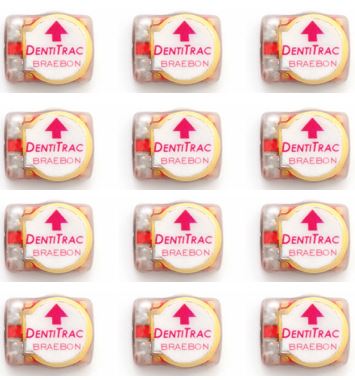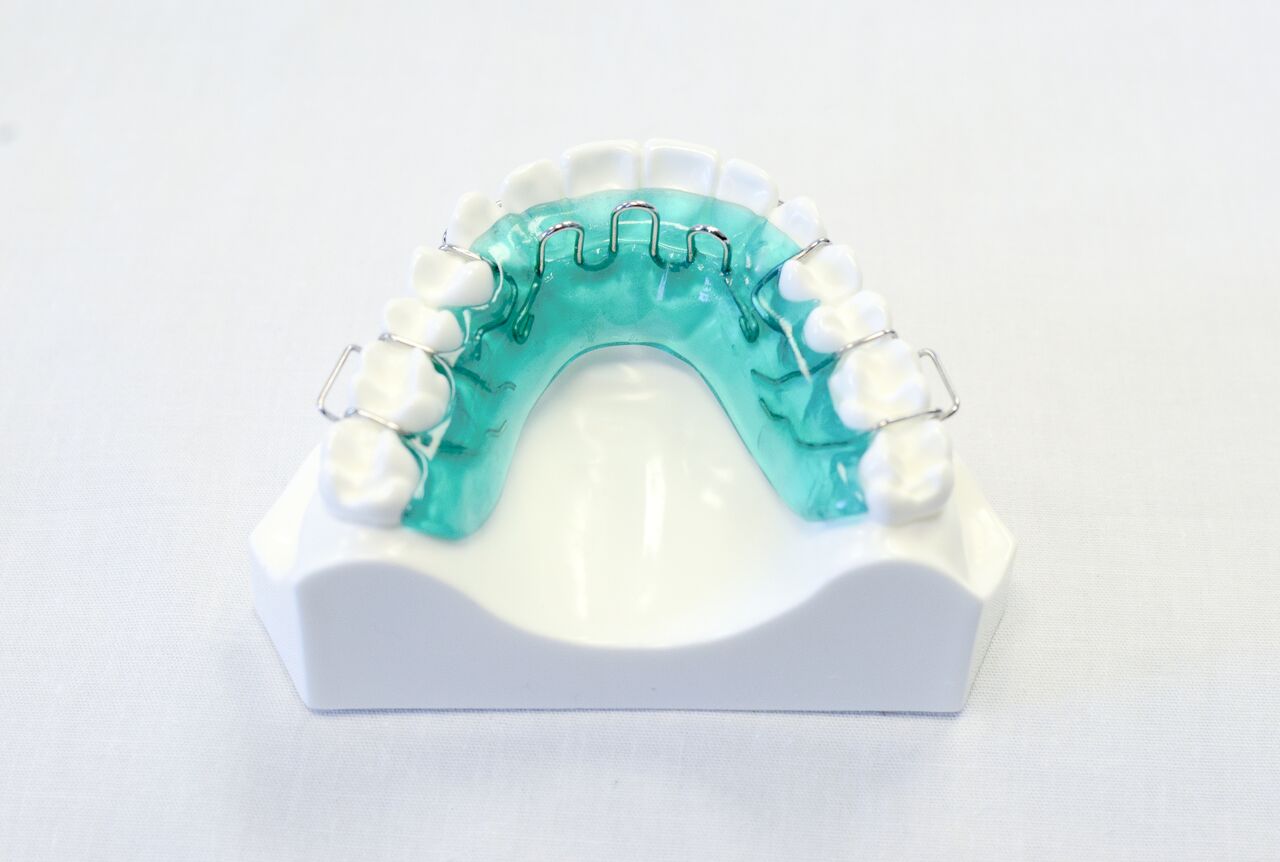The ALF
The A.L.F (Advanced Lightwire Functional) is an expansion appliance using a continuous light force for the transversal development of the lower and upper arch. The ALF draws its inspiration from th e Crozat, the first generation of removable orthodontic appliances. Once installed, this appliance requires fewer office visits and control examinations. The ALF shown here allows for the expansion of the upper jawbone. Usually installed to be removable, it is often cemented or installed in a fix/removable fashion. In fact, some clinicians prefer to apply some undercut to the canines and molars so that the mechanism remains removable: the appliance can thus be removed for assessment of its activation. The wires used in this appliance being very light, patients must not attempt to remove this appliance by themselves. The ALF is available in different models such as the ALF Expansion/Sagittal, the ALF Twin Block, and several others.
e Crozat, the first generation of removable orthodontic appliances. Once installed, this appliance requires fewer office visits and control examinations. The ALF shown here allows for the expansion of the upper jawbone. Usually installed to be removable, it is often cemented or installed in a fix/removable fashion. In fact, some clinicians prefer to apply some undercut to the canines and molars so that the mechanism remains removable: the appliance can thus be removed for assessment of its activation. The wires used in this appliance being very light, patients must not attempt to remove this appliance by themselves. The ALF is available in different models such as the ALF Expansion/Sagittal, the ALF Twin Block, and several others.
Upper Schwarz
The Upper Schwarz is a slow expansion appliance without any occlusal pads, used to correct the maxillary transverse and to stimulate buccal tipping of the lower molars. The Schwarz also helps in creating space to align incisors and reduce crowding. E xpansion is obtained by activating a screw at a rate of 0.025mm once a week. Clinical practitioners should closely monitor the relationship between maxillaries. Indeed, expansion of the upper lingual cuspids must not cause any buccal crossbite with the lower buccal cuspids but rather exert similar movement on them. The tipping movement of lower molars also has to be monitored. Wearing a lower Schwarz or adding acrylic extensions to the appliance ensures best treatment results.
xpansion is obtained by activating a screw at a rate of 0.025mm once a week. Clinical practitioners should closely monitor the relationship between maxillaries. Indeed, expansion of the upper lingual cuspids must not cause any buccal crossbite with the lower buccal cuspids but rather exert similar movement on them. The tipping movement of lower molars also has to be monitored. Wearing a lower Schwarz or adding acrylic extensions to the appliance ensures best treatment results.
Lower Schwarz
Just like its upper counterpart Lower Schwartz, the Lower Schwartz is a slow expansion appliance without any occlusal pads. It helps in correcting the maxillary transverse and creating space to align incisors and reduce crowding. Expansion is obtained by activating a screw at a rate of 0.025mm once a week.
The Double Screw Split Plate
The split plate is unquestionably the removable expansion appliance most prescribed by practitioners. Two screws fitted on it must be activated at a rate of 0.025mm twice a week to provide semi-rapid expansion. The Split Plate is actually a Schwarz modified with added acrylic pads. Because these pads are smooth, the appliance helps correct the maxillary transverse without any adverse effect on the mandible. The Split Plate is an excellent example of an appliance often fitted with complete pads that can nonetheless be modified during treatment. Note also that in order to ensure best results on the entire maxillary, patients must keep their appliances on while eating.
Fan Type Expansion Appliance
Fan-like expansion appliances are recommended for patients whose arches point somewhat forward. This irregularity is corrected by expanding the anterior segments only using a special screw fitted with a hinge; inverting the hinge provides expansion of the posterior segments. The expansion screw also has other orthodontic purposes.
Upper 3 Screw Sagittal
Three screws are fitted on the Sagittal to obtain anteroposterior and transverse movements. This appliance is generally used to create more space when the relationship between the two maxillaries is inadequate (correction of dental Class II cases and dental Class III cases to some extent). A flat labial wire can be added to increase anchorage of the appliance and to prevent anterior teeth from tipping. Extraoral accessories, such as the reverse head gear or face mask, can be added to the Sagittal to increase its efficiency. However, these two accessories are not very patient friendly.
transverse movements. This appliance is generally used to create more space when the relationship between the two maxillaries is inadequate (correction of dental Class II cases and dental Class III cases to some extent). A flat labial wire can be added to increase anchorage of the appliance and to prevent anterior teeth from tipping. Extraoral accessories, such as the reverse head gear or face mask, can be added to the Sagittal to increase its efficiency. However, these two accessories are not very patient friendly.
Lower 3 Screw Sagittal
In as much as the roots of molars are strongly anchored, the lower Sagittal is more efficient when a lip bumper is added. However, in order to obtain the best results during distalization of the first anterior molars, it is better to extract the second molars. If these teeth are not yet grown, it must be ensured that they are not impacted during treatment. Note that acrylic pads are seldom fitted on lower expansion appliances.
Nord Crossbite Appliance
The Nord Crossbite is perfect for patients with a crossbite and whose median lines are deviated. This design is a unilateral palatal expansion appliance with two screws that must be activated at the rate of 0.025 mm twice a week. With a crossbite, the pad must be smooth to avoid interference with antagonistic teeth.


Wear it. Trac it. ® DentiTrac ® The patent-pending DentTrac® is a miniature micro-recorder designed to measure patient treatment compliance using Braebons TM extensice world-leading experience in sensors and recorders. Compliance measurement has been used in sleep therapy CPAP devices for years with numerous benefits. Now, DentiTrac® extends […]
READ PROFILE
The Nance The Nance button is a large acrylic piece used to maintain space on the upper maxillary. With pressure on the palate, it maintains distally the first permanent molars. It can also correct tipping of permanent molars caused by treatment with a removable appliance (or a fixed appliance). Used […]
READ PROFILE